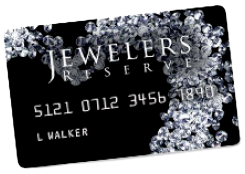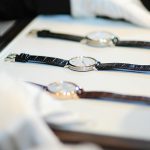Photo by Zoran Zeremski at Shutterstock
Keeping Watch Crystals Clear
Crystals are one of the most commonly replaced parts of a mechanical watch. The crystal is the transparent outer shell. It protects inner components of the watch and lets you see the time. Watch repair specialists in Vail, CO, have plenty of experience with crystals. A watch crystal is the first part of a watch to be damaged and endures the highest levels of everyday wear and tear.
Acrylic Plastic
Plastic is the softest and least expensive material. Most plastic watch crystals are acrylic Plexiglass. It rarely shatters because plastic is so soft and flexible, but these same qualities make plastic very prone to scratches. A repair professional has the correct tools to buff and polish minor scratches. Replacement is probably the best option for large scratches or a cloudy surface.
Mineral Glass
Mineral glass is the next step up from plastic or acrylic in terms of price. Modern day mineral glass watch crystals are usually made from tempered
mineral glass. This means the surface has been heated to a high temperature to increase resistance to scratches or splintering. Damaged mineral
crystal can not be polished or repaired It must be replaced.
Sapphire Crystal
Synthetic sapphire crystal is made of heat-tempered aluminum oxide, not glass. The aluminum oxide is crystallized by heating it to very high temperatures. Synthetic sapphire shares the same level of hardness as naturally occurring sapphire gemstones. However, synthetics do not contain any of the coloring agents that give natural sapphires their brilliant hues.
How It’s Made
Sapphire is one of the hardest substances on earth. It has a measurement of 9 on the Mohs scale, which is a rating system for hardness of various substances. Sapphire crystal forms a round mass during heating. This mass is sliced into slim disks with a diamond-coated saw because diamond is one of the few substances hard enough to cut sapphire. Ground and polished disks become finished watch crystals.
AR Coating
You should always consider taking a damaged sapphire crystal to a watch repair professional. Sapphire crystal has a high index of refraction. Multiple layers of an anti-reflective (AR) coating are applied to lower reflective properties. It would be very difficult to see through the crystal and read the time if the crystal’s reflective properties were left unaltered. A scratch on your crystal may simply be a scratch in the coating.
Sapphire crystal can only be scratched by a substance harder than itself. Most of us do not encounter diamonds randomly in our daily activities here in Vail, CO. The most common source of damage to these crystals are walls and other structures containing silicon carbide, which is a substance between 9 and 10 on the Mohs scale.
A watch repair professional can remove and reapply the AR coating, which leaves your crystal as good as new. An AR coating applied to the inside of the crystal instead of the outer surface protects it from scratches. A scratch in the synthetic sapphire itself is not repairable, so the watch needs a replacement crystal.
Crystal Replacement
Replacing a watch crystal is not a simple matter of popping the old one out and dropping in a new crystal. A watch repair specialist has to measure the diameter and thickness of a watch before replacing the crystal. Custom-cut crystals with unusual shapes, such as clouds or hearts, require even more measurements.
Irregularly shaped crystals are usually not available to purchase commercially. The replacement crystal has to fit the shape and size of the dial. This can only be achieved if a watch repair specialist alters a standard round crystal to match the original custom-cut placement.
Material and Shape
A watch purchased relatively recently almost always has a number or some other identifying factor that lets the owner find the type of crystal and placement used. This information is not as easily accessible with vintage watches. If the type of crystal is not known, the repair technician has to identify the material and shape. It takes years of practice to quickly and easily make such determinations.
Specialty Tools and Gaskets
A repair professional uses specialty tools to replace or repair crystals. Required tools vary according to the type of crystal and placement method. Sometimes crystals are secured with liquid cement, two-part epoxy or ultraviolet glue.
Watch repair technicians frequently use a crystal lift to place acrylic and sapphire crystals in a compression fit. Mineral and sapphire crystals are very hard and inflexible. A hard crystal inserted into a hard, inflexible steel or titanium watch case leaves no opportunity for materials to settle or shift into a tight fit. Small gaps could exist between the crystal and case. Although these gaps are extremely small, they can let moisture seep into the watch.
A gasket or tension rings close gaps around the crystal to create a waterproof seal. Crystal gaskets are usually made of nylon in a flat, “L,” or “I” shape. Watch repair professionals use a crystal press to push the watch crystal and gasket into the case so the gasket is squeezed tightly between the crystal and case.
Gaskets become brittle over time and eventually deteriorate. A broken gasket can not repel moisture or keep the crystal secured, so the watch is vulnerable to moisture damage. Make sure your watch remains waterproof by asking a watch repair professional to change the gasket every few years.
Read the time easily and enjoy the elegant appearance of your watch for its entire lifetime. Small scratches and other imperfections in the watch crystal can be fixed, even for vintage watches. Consult the watch repair professionals at Matheu’s Fine Watches to discuss options for crystal repair or replacement.





